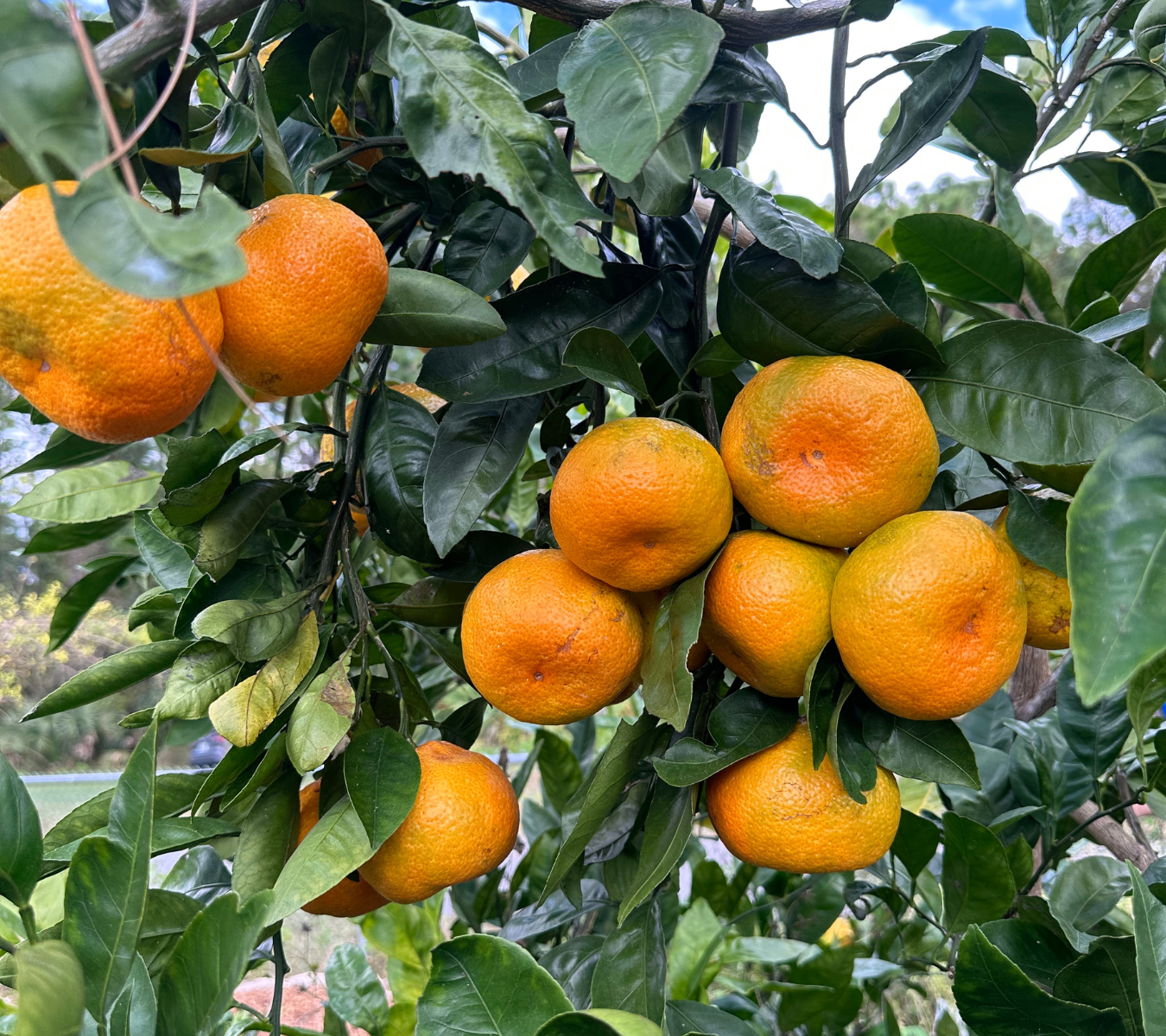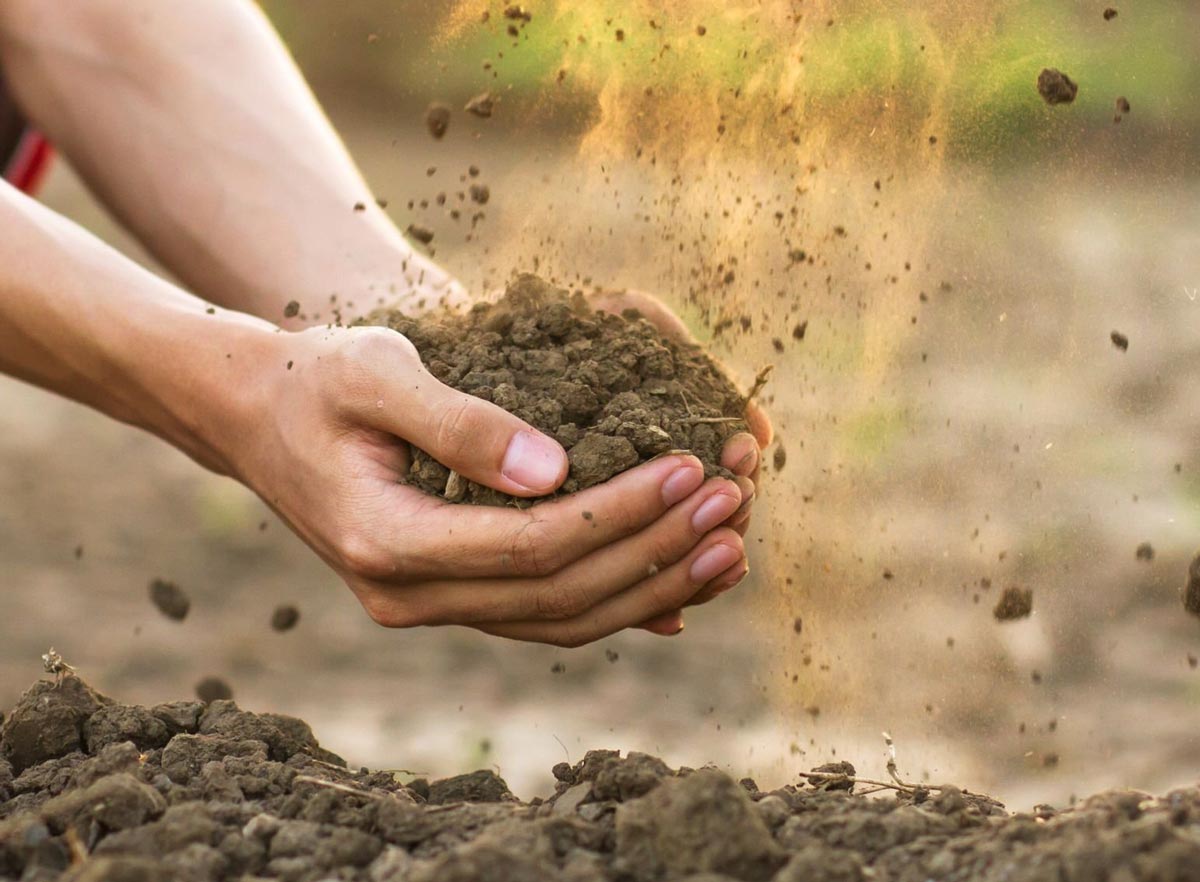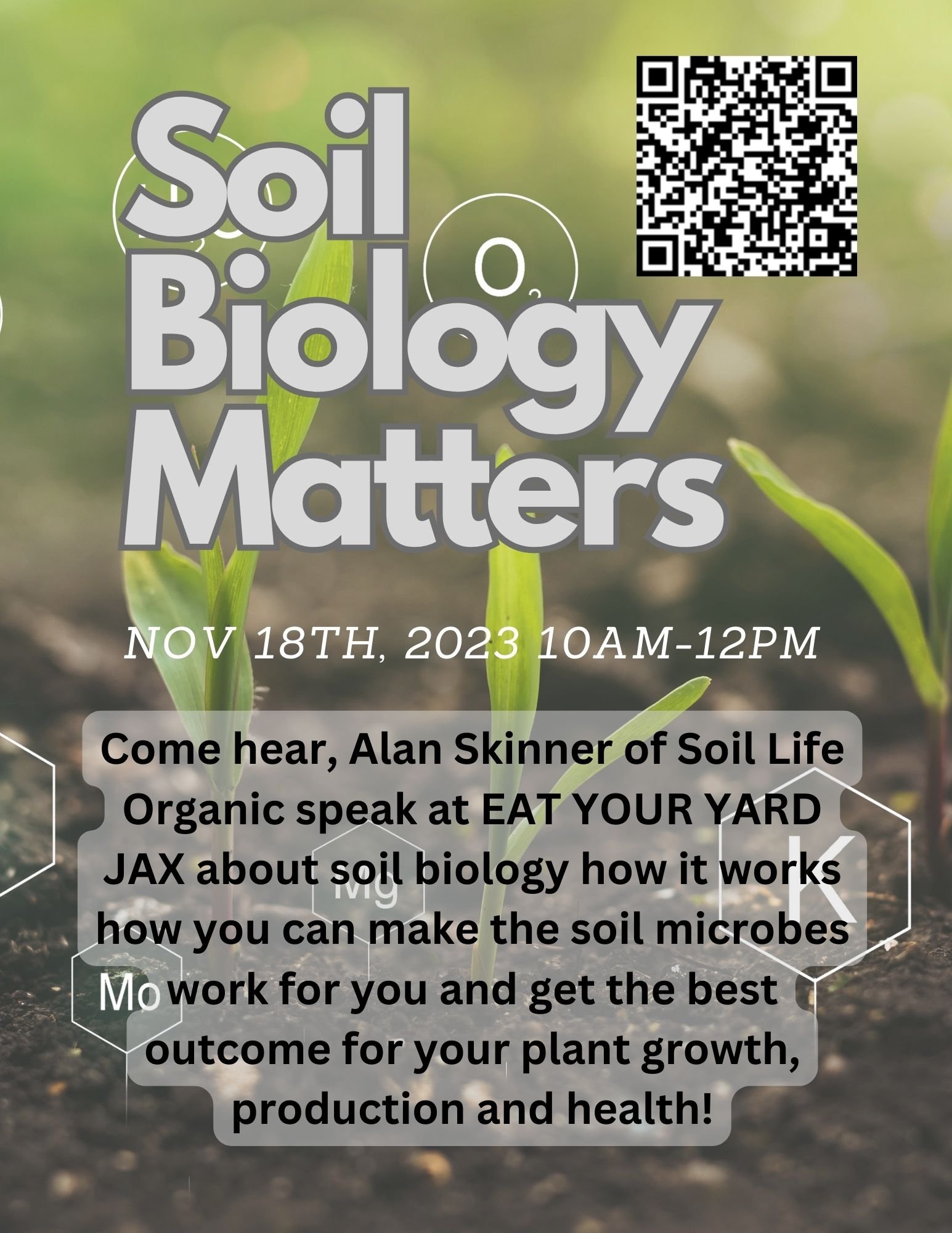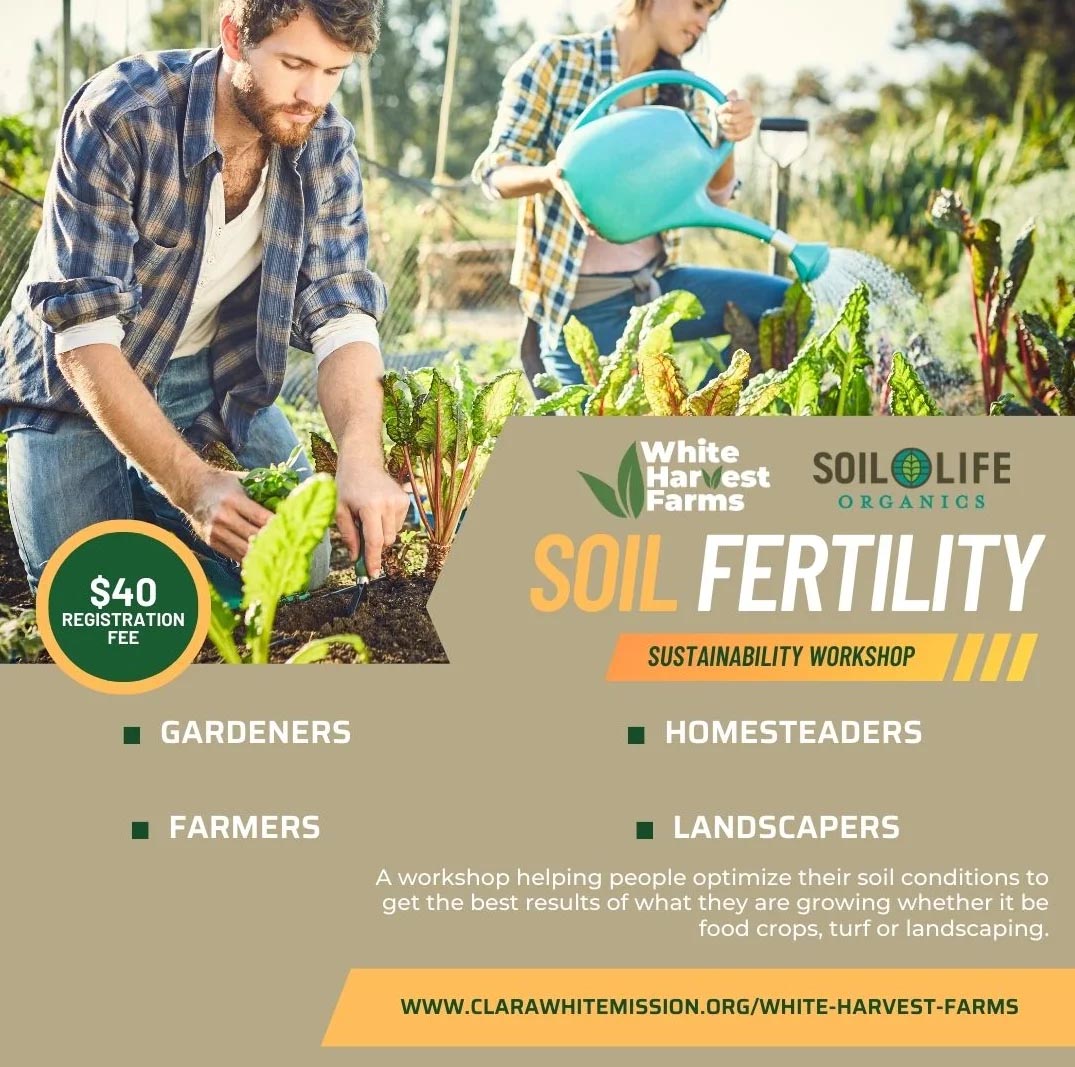Between 2018 and 2021, methods to transition from conventional organic to biological farming were studied at White Harvest Farm, a 4-acre, no-till vegetable farm. We defined conventional organic farming as a program that uses OMRI-Listed organic fertilizers as the nutrient source. Soil biology was assessed using the “Differential Interference Contrast Microscopy” method “the Microscope Method” (Murphy, D. 2001). An onsite compost facility was constructed to make compost to amend the soils to achieve target levels of beneficial soil microbes.
Impact
Comparison of conventional organic to biological farming
For the five plots on the farm, biological methods were compared to conventional organic farming methods by assessing biology populations and diversity over time, yield, Brix (nutrient quality), as well as organic matter improvement.
Microscope as the tool to assess biology
The microscope was found to be an excellent tool to allow frequent, accurate assessments of the soils and compost produced. Financial Analysis Yields were consistently higher with the biologically farmed plots and were able to offset the input costs associated with the biological methods used to amend the soils
Guidelines Developed
Guidelines were developed on the optimum rate of biological inputs to allow a cost effective transition from a conventional organic farm to a biologically farmed operation. Guidelines for using cover plants and IPM cost effectively were developed for a climate similar to the northeast Florida area.
Background
Plants receive their nutrients in a soluble form. Natural plant communities are
adapted to rely on the “soil food web” or a community of bacteria, fungi, protozoa, microarthropods and nematodes to produce soluble nutrients. Conventional farming methods use liquid or granular fertilizers to substitute the role of the soil food web. While fertilizers feed crops to achieve target yields, the persistent use of fertilizers can weaken plant’s immune systems and require additional chemical inputs to deter pests and diseases. This research focused on practical ways to use the soil food web to deliver soluble nutrients to annual vegetable crops.
Target Soil Microbe Populations for annual Vegetable Crops
- Beneficial bacteria: 135 micrograms/gram of soil
- Beneficial fungi: 135 micrograms/gram of soil
- Beneficial protozoa: 10,000 to 50,000 per gram of soil
- Beneficial nematodes: 100 per gram of soil Source: www.soilfoodweb.com
Note: Biological target populations for other crop types (e.g. turf grass, blueberries, citrus) will differ and are based in the successional nature of the plant type to be grown.
Each of the 5 plots had Control and Test beds. All beds were treated the same in all respects, except that only the Test beds received biological amendments. A chronological record of all soil assessments and treatments were documented, along with yield and Brix comparisons between the Control and Test beds. Farmers normally take mineral soil samples once or twice a year because the mineral nature in soil is relatively stable. However, soil biology levels can vary greatly over a growing season due to both manmade and natural influences. Because soil biology levels are dynamic over the course of a growing season, a quick, accurate and cost effective method has to be implemented to allow efficient decision making on how to apply biology and other compatible nutrients. The Microscope Method is one of several methods available to farmers to assess soil biology, however, it is not presently widely accepted. Other more conventional, industry accepted tests such as the Phospholipid Fatty Acid (PLFA) test and Haney Test are more commonly used by farmers focusing on soil biology. In this grant we compared the Microscope Method to the PLFA method to see if we could correlate the results so that farmers could have confidence that either method could be used depending on how they intend to test their soil for biological populations.
Transitioning soil to a biologically farmed system involves the following steps:
- Determine crop type grown so that the desired soil microbe target populations and diversity can be determined
- Assess the soil using the microscope 3. If the soil biology is below the target, amend the soil with BiocompleteTM compost (BiocompleteTM is a term used by Dr. Elaine Ingham to describe microbe rich compost).
- After 2-3 weeks, reassess the soil biology to see the impact of the previous treatment.
- Continue this cycle until targets are met.
Cover Plants
Fostering a healthy soil food web in the soil not only involves amending the soil with compost, but also growing a system of plants that will sustain the microbes during the crop growing season and fallow periods.
Three cover plant system options were researched that were compatible with a no- till, vegetable farm:
- Intercrop a secondary cash crop with the primary cash crop
- Annual cover plant with the primary cash crop
- Perennial cover plant with the primary cash crop
Integrated Pest Management
IPM, is a comprehensive approach to managing plant pests. IPM uses cultural, biological and chemical methods to cause the least harm to people, property, and the environment. Pest and disease issues noted on the farm at the beginning of the grant were primarily harlequin bugs, leaf footed bugs, pickle worms, squash vine borers, horn worms, vegetable leaf miners and aphids. During the grant, insect habitat and trap crops were planted to attract pests away from cash crops and establish predatory and beneficial insect populations. Beneficial flowering plants were planted to attract pollinators and predator insects to prey on the pest insects. Bird and bat boxes were also erected to promote predation of pest insects and worms.
Financial Analysis
Test and Control beds both received fertilizers while the plots were transitioning from conventional organic practices to biological farming. Test beds received the additional inputs of compost or compost extract. Costs and crop yields were identified for the Control and Test beds separately. A cost analysis was performed to determine if the additional input costs of adding biology were offset by the additional benefit from higher yields’ corresponding increase in sales of the Test beds.
Results
- The microscope was an invaluable , cost effective tool to assess soil, compost and compost amendment quality. It allowed farm staff to accurately determine when input costs could be reduced because the soil biology was present to make nutrients soluble to crops (nutrient cycling). It also provided immediate feedback on the quality of compost and extracts made.
- Compost and compost amendment production were optimized to have higher microbe populations and diversity.
- Nutrient management systems were developed for soils that were “transitioning” to biological as well as “maintenance” programs with reduced inputs for plots that were able to achieve target microbe populations.
- Yields in the Test beds were almost in all cases higher than in Control beds.
- Brix was very little statistically different between Test and Control beds.
- Organic matter in all plots increased over time.
- There was poor correlation between the Microscope Method and the PLFA method. The Microscope Method allows the user to visually see what is present in the sample and is dependent on the user’s knowledge of microbe morphology to identify the types of microbes and quantify the populations. The PLFA relies on a laboratory analysis of microbial biomass. It cannot account for up to 50% of the biomass in a soil sample and it does not account for nematodes which are significant nutrient cyclers. The primary difference in data could be that the PLFA is measuring different microbial biomass than that observed under the microscope. Farmers can decide which method to use based on whether they want to assess the sample on site promptly using a microscope, or send soil samples off to professional laboratory to assess biology.
- A list of recommended cover plants and cover plant strategies was developed for the NE Florida region. Perennial cover plant systems were limited in their effectiveness for this type of farm operation.
- IPM methods resulted in significant crop improvement and increased beneficial insect populations on the farm. A guide was developed with pests common in NE Florida and integrated strategies to reduce their impact on annual crops.
- Once the beds were fully able to achieve the target microbe populations, the Test beds yield benefit was able to offset the additional biological input costs.
Benefits of Cover Plants in annual vegetable production
- Sustain microbe populations
- Cash crop opportunity
- Nutrient availability
- Weed suppression
- IPM
- Aesthetics
Challenges and Lessons Learned
- High Quality Compost is Critical. High biology concentration microbe compost and amendment applications were critical to timely transition to biological farming
- Poor Existing Soils and Drainage. Existing soils were challenging due to presence of soil pathogens and poor percolation.
- Weed Pressure. Excessive weed pressure took over a year to get under control.
- Making Good Compost is Challenging but Rewarding. Making BiocompleteTM compost was very challenging and nuanced and required obtaining high quality input ingredients. Teaching others this method requires time and patience.
- IPM Challenges. Difficult to find the time in production system to manually scout for pests so chemical means of IPM were frequently used to ensure crop success.
Next steps
- Optimize Compost Production and Application Systems. Making compost consumes critical farm labor and must be optimized to reduce costs.
- Compost extract application methods also must be simplified and optimized to reduce labor costs. Biological Amendments. More study must be performed to see what amendments can promote soil food web growth and also provide nutrients to the crops simultaneously. This can further reduce biological input costs by efficiently leveraging compost supplies.
- Brix Levels. Brix levels were low (8 or less) and ideally should be between 8 and 14. Reduced pest pressure occurs at higher Brix levels further reducing the need for pesticides. Higher soil microbe populations can likely improve photosynthesis in the plants resulting in higher Brix and continued effort and research should be performed to increase microbe populations.
Output Links
Access the full research report for this grant, click HERE. (Contact Allen@soillife.net if you have trouble accessing this link.)
View the virtual poster from the Soil and Water Conservation Society 76th International Annual Conference “Practical Ways to Assess and Manage Soil Biology on a No-Till Urban Farm”, click HERE.
Take a virtual tour of White Harvest Farms, click HERE.
References
Murphy, D. Differential interference contrast (DIC) microscopy and modulation contrast microscopy, Fundamentals of Light Microscopy and Digital Imaging, Wiley-Liss, New York,pp.153-168 (2001), as adapted by methods in Dr. Elaine’sTM Soil Food Web School (www.soilfoodweb.com).
Grantee: Clara White Mission, Inc. Project Title: White Harvest Farm Regeneration Initiative Agreement Number: NR193A750008G006 Project CEO: Ju’Coby Pittman Soil Biologist: Allen Skinner Farm Manager: Mallory Schott Lead Farmer: Sarah Salvatore Project Schedule: October 2018 to September 2021 Project Location: 4850 Moncrief Road, Jacksonville, FL
Download the PDF of the publication here.











